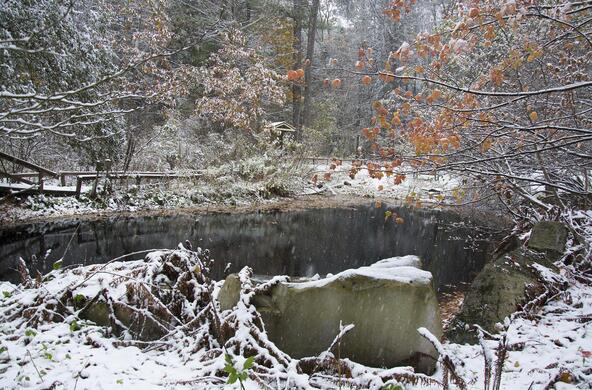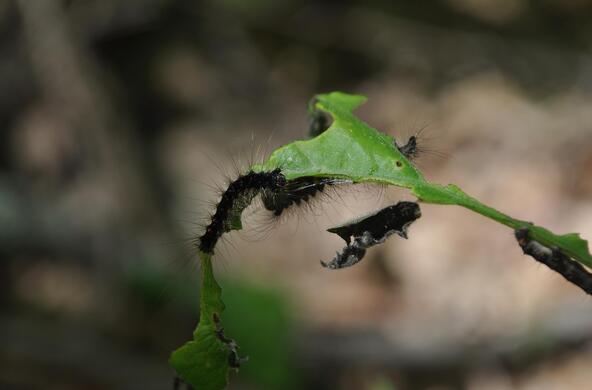When it comes to reproduction, one of the mightiest members of the forest is also one of the most mysterious.
At unpredictable intervals, groups of stately oaks, usually recognized for their strength and longevity, breed like rabbits. The phenomenon is known as masting, or the simultaneous production of unusually large numbers of acorns by a population of trees.
It’s impossible to anticipate a mast year because scientists aren’t sure what triggers it, and few places collect the data necessary to verify when it occurs, but this year, oak trees on Long Island and some species in central Pennsylvania are dropping acorns like there’s no tomorrow.
“I think they’re having a super mast year, not just a mast year,” said Marc David Abrams, a professor of forest ecology and physiology at Penn State referring to the red oaks in his area. “It’s like something I’ve never seen before, and I’ve been observing trees for 30 years.”
The bumper crops are beneficial because they increase the likelihood that a few oak seedlings will reach maturity. But other consequences ripple through the ecosystem. Animals that feed on acorns will feast on the bounty, and their populations, normally controlled by limited food supplies, will swell. The parasites they support will do the same.
One important beneficiary is the white-footed mouse, the main reservoir of the bacterium that causes Lyme disease.
About 10 months after acorns peak in October of a mast year, large numbers of sated mice will begin hosting tick larvae, and about 10 months after that—in May or June the second year after the mast—those larvae will develop into nymphs, which can bite people.
While deer are often associated with ticks that carry Lyme disease, the ruminants don’t transmit the infection. Mice do, and when they flourish, the disease will proliferate.
“Having a good cache of this very nutritious food allows mice to have really good overwinter survival and have a jump start on breeding in spring,” said Richard S. Ostfeld, a disease ecologist with the Cary Institute of Ecosystem Studies in Millbrook, N.Y. “You might find one or two per acre in a low mouse year. You can get well over 100 per acre in a heavy year.”
Last year, New York’s Hudson Valley experienced a mast year, according to Dr. Ostfeld, who has been counting acorns on the institute’s 2,000-acre property since 1992, and this year it was overrun by what he described as a mouse plague. He expects the coming year to be “risky” for Lyme disease, but on the plus side, the mice will also chow down on the pupae of gypsy moths, which defoliate trees and are one of the country’s most devastating forest pests.
There are several theories about what’s behind the periodic eruptions of acorns.
Weather and the availability of resources such as nutrients in the soil play a role, but other factors may also contribute, according toWalter D. Koenig, an ornithologist at Cornell University and Johannes Knops, a professor of biological sciences at the University of Nebraska-Lincoln, who track mast years in California.
Producing acorns takes a lot of energy, they say, and after a large crop, it’s possible that the trees, which grow slowly in mast years, must redirect their resources to support new growth. They and other scientists also hypothesize that boom-or-bust cycles are adaptations that help oaks outmaneuver predators that gobble up their yield in meager years.
“What the oak is trying to do is produce so many acorns that predators like chipmunks, squirrels, deer and birds can eat all the acorns they want, but the tree has produced so many there will be leftovers to produce seedlings,” Dr. Abrams said.
One study of the phenomenon, by Patrick Brose, a researcher with the U.S. Forest Service, estimated that approximately 210,000 acorns per acre fell in Clear Creek State Forest, a 13,500-acre property, during a mast year that affected northern Pennsylvania in 2001.
Dr. Brose tracked the crop over time and found that only one in five red oak acorns, the most abundant species, germinated. When an area of the forest had a dense understory, or layer of growth, beneath the main canopy, along with pressure from browsing deer, only 2% of the acorns survived for eight years.
Areas that kept out deer and thinned the understory to make room for seedlings improved survival to 56%, but the oaks’ struggle to regenerate was apparent.
“In years when we don’t get bumper crops, most of the acorns are consumed or destroyed,” said David R. Jackson, a forest resources educator with Penn State Extension.
Increases in the population of deer, which eat both acorns and seedlings, and a century-old forestry policy to eliminate fires that, historically, benefited oaks, make mast years even more important for regeneration.
But for now, scientists, like the rest of us, must simply wait for the trees to stage their next reproductive extravaganza—at a time to be determined.








